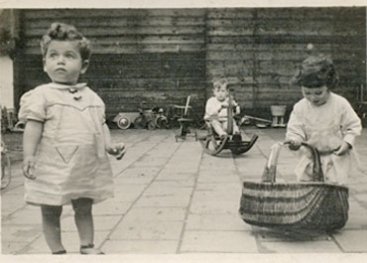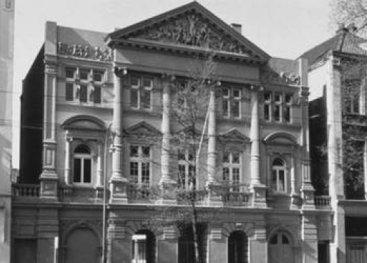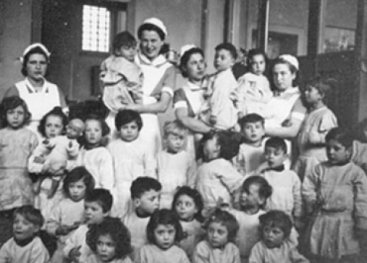
On the road
The trips to the hiding places in Friesland or Limburg were made by train. It was usually women who travelled with the children. A woman with one or more children was not such a suspicious sight. And the Nazi occupiers checked women’s papers less frequently.
Say anything...
For most children, the train trip itself was a major event. They had never left the city before. Others were mainly frightened. They were not allowed to talk about their parents, friends or the day care centre. They were not allowed to do or say anything during their trip that would draw attention to them. A Jewish name was enough to betray them! The older children were told what was going on. They understood the need for silence. Small children, who would not understand, were told nothing.
 ‘I felt I was away from that strange day care centre and safely with my uncle and aunt. Until I noticed my aunt packing a small suitcase. That was for me. I had to leave again the same evening. That’s when I started my tour of various hiding places. From Amersfoort to Zaandijk, to Koog aan de Zaan and then to Friesland. I felt strange and frightened being on the road. You were going into the unknown, where you had to get used to new, strange people every time.’
‘I felt I was away from that strange day care centre and safely with my uncle and aunt. Until I noticed my aunt packing a small suitcase. That was for me. I had to leave again the same evening. That’s when I started my tour of various hiding places. From Amersfoort to Zaandijk, to Koog aan de Zaan and then to Friesland. I felt strange and frightened being on the road. You were going into the unknown, where you had to get used to new, strange people every time.’
Salo Muller
 ‘A guy named Arie took me on the train to Tienray in Limburg. There was also a small boy of around six, a real city kid like me. Seated across from us was a man reading a German newspaper. The boy was very excited by all the cows he saw from the window and kept shouting, with a strong Yiddish accent: “Oi, another cow! Oi, another cow.” From time to time the man would lower his paper and look at us curiously. Arie was biting his lip with nerves. I almost died.’
‘A guy named Arie took me on the train to Tienray in Limburg. There was also a small boy of around six, a real city kid like me. Seated across from us was a man reading a German newspaper. The boy was very excited by all the cows he saw from the window and kept shouting, with a strong Yiddish accent: “Oi, another cow! Oi, another cow.” From time to time the man would lower his paper and look at us curiously. Arie was biting his lip with nerves. I almost died.’
John Blom

